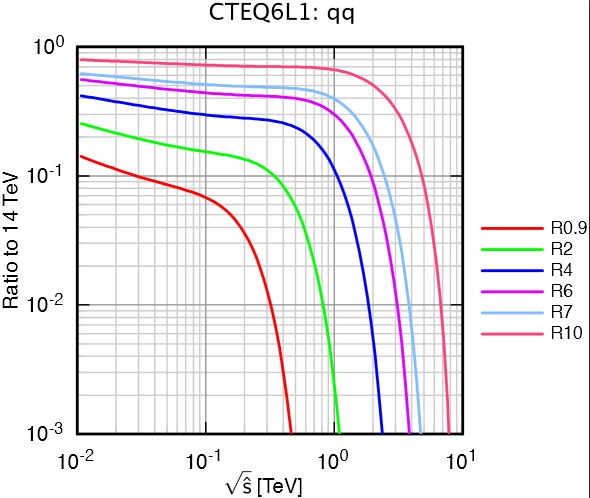I remember listening to a very nice talk by Guido Martinelli, who was discussing the status of flavour physics, and getting rather depressed at the view of a very consistent picture of agreement between B physics observables and Standard Model predictions. This came at a moment when the CDF experiment had been probing the high-energy frontier with very detailed measurements, none of which appeared to show even the smallest glimpse of a departure from model predictions.
I was struck with the idea that all the scenarios of new physics that we had been obsessing with in the last twenty years or so had been yielding nothing but a string of failures. No new physics appeared even remotely in sight, and the promises of new physics signals jumping at us the very moment we turned on our detectors at the Large Hadron Collider appeared to me in their full glory of wishful thinking.
Depressed by the situation, and convinced that Supersymmetry in particular was a theory too good to be true, I decided to offer a $1000 wager. An insurance bet, if you like, saying that no new SUSY particles would show up at the LHC. I reasoned I was in a win-win situation: win $1000, or discover new physics!
 I soon received some expressions of interest from readers of the blog, and requests for a modification of the stipulation. One needed to specify a deadline, which was set at one year after the collection of 10 inverse femtobarns of proton collisions by the CMS and ATLAS experiments, and a more generic statement that "no 5-sigma observation claim of new physics" would be issued by the experiments.
I soon received some expressions of interest from readers of the blog, and requests for a modification of the stipulation. One needed to specify a deadline, which was set at one year after the collection of 10 inverse femtobarns of proton collisions by the CMS and ATLAS experiments, and a more generic statement that "no 5-sigma observation claim of new physics" would be issued by the experiments.Two colleagues took the bet: Gordon Watts, a blogging experimentalist from the ATLAS experiment and professor at the University of Washington, accepted a $250 bet, with the agreement that the loser would donate to a charity chosen by the winner; and Jacques Distler, a theoretician and professor at the University of Texas at Austin as well as a well-known blogger himself, took the remaining $750.
The rest of the story, leading us to today, is known: the LHC had a bumpy start, took much longer than predicted to spew out good physics, and only reached so far 57% of its design energy; on the other hand, ATLAS and CMS performed flawlessly and proved extremely successful, discovered the Higgs boson, and produced exquisite new detailed measurements of Standard Model parameters - which, needless to say, point nowhere near new physics.
The two experiments have by now collected, and already analyzed (at least for some of the most important searches and measurements) a good 25 inverse femtobarns of data.
In principle, one could argue that since 14 TeV were not reached, there could be new physics there that ATLAS and CMS have not had a chance to see yet; on the other hand, the bet did not specify a center of mass energy, but it set the deadline as the moment when the experiments would have analyzed 10/fb of data. So although I am willing to agree that the present situation is not an ideal one for my opponents, on the other hand it is probably fair to concede the bet, since the luminosity has been achieved, while the energy might never be.
Furthermore, if 2.5 times the data does not make up for the 0.57 factor in energy, they alleviate the deficit. One way to look at this is to study the "parton luminosity ratios". Chris Quigg has very nice plots in his website on this topic. For instance, you can ask the question: what is the effective luminosity I am studying, if I want to discover a 1 TeV particle produced in quark-quark interactions, and I am only using x-TeV collisions instead than 14-TeV ones ? The answer is in the graph below. You should substitute for the x above the quantities corresponding to the labels on the right (0.9, 2, 4, 6, 7, 10 TeV).

The reason why a deficit in energy correspond to a deficit in integrated data is that the proton is a bag of garbage, wherein only rarely does one find an energetic quark. Energetic quark-quark collisions are a rare outcome in a proton-proton collision; and the higher the fraction of energy one wants, the less frequent this is. So if one fixes the quark-quark center-of-mass energy (which is on the horizontal axis in the graph above), this can be achieved with some low frequency (hence few times in a fixed running period) if the total proton-proton collision energy is lower, and with some higher rate if the total proton-proton collision energy is higher.
In the figure one sees that as far as the discovery of a 1-TeV particle produced in quark-quark collisions is concerned, one needs 2.5 times the data (the ratio of 1 to 0.4, the level which you get by following the cyan line where it intercepts the 10^0 vertical line) if one is running at 7 TeV than if one is running 14-TeV collisions. In that sense, collecting and analyzing 25/fb per experiment at 8 TeV (but it was 7 TeV for the first 5/fb) is roughly equivalent to analyzing 10/fb at 14 TeV.
Of course one might also read the graph in a more critical way: for a 4 TeV particle, one would need about 20 times as much data at 8 TeV than at 14 TeV... But in truth, most SUSY models predict sparticle masses at the TeV scale or below (so effective center-of-mass energies of 2 TeV or below). All in all, I believe the situation we ended up in does favour me, but not unacceptably so (but that is just my opinion, of course).
----
The time to claim the bet is right also because this week the Lepton-Photon conference is being held in S.Francisco, and that is the place where the LHC experiments would make an announcement of new discoveries. Which just aren't there, of course.
So I recently contacted Gordon and Jacques, and they both graciously agreed to concede the bet. Of course neither of them is happy that the LHC stopped at 8 TeV, but in exchange this allowed them to demonstrate a good dose of fair play. In a few days I hope to receive from them a text with their take of the story, as well as a confirmation of their payments. As for the charity, I notified Gordon that I would like him to donate to Emergency, a non-profit organization that builds and operates hospitals in war zones.
And I should mention that the bet discussed here was the subject of a few pieces on science magazines. One I still have a link to is the one of Physics World, "Physicists who fancy a flutter", by Martin Griffiths.




Comments